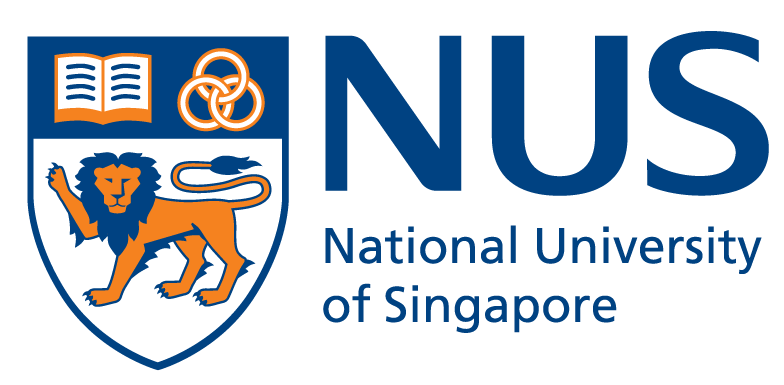Building a global, multi-disciplinary platform to promote women’s health: Global Centre for Asian Women’s Health
Published: 28 Nov 2023

What do retinal scans and eating meals rich in greens, whole grains, legumes, and nuts, and moderate amount of fish, have to do with health of women and children?
They are highly correlated, according to recent academic research conducted at the Global Centre for Asian Women’s Health (GloW) at the Yong Loo Lin School of Medicine, National University of Singapore (NUS Medicine).
In the first study, by systematically reviewing findings involving more than 100,000 female study subjects, the investigators from GloW found that women whose diets consisted largely of fruits, nuts, whole grains, vegetables, legumes, healthy fats such as those present in fish, while eating limited amounts of red meat had markedly lower rates of gestational hypertension and diabetes, preeclampsia and preterm birth.
In the second study, the narrowing of the tiny blood vessels in a woman’s retina before pregnancy was found to be intricately linked to suboptimal fetal growth during gestation. Specifically, this was seen as reduced growth in fetal abdominal circumference and thigh bone length from mid- to late-pregnancy.
Mediterranean diet, promising for improving female reproductive and maternal health
Nutrition and diet are priorities to good health, and this study demonstrates that consuming a diet with Mediterranean elements has benefits on female reproductive health.
Originating in Mediterranean regions, the diet is characterised by an elevated consumption of fruits, vegetables, nuts, legumes, whole grains, and healthy fats, olive oil, with an emphasis on extra virgin olive oil. It also involves the moderate intake of dairy products, fish, and poultry, while limiting red and processed meat consumption. Existing research has shown this dietary pattern to be effective in reducing the risk of cardiovascular diseases and encouraging healthy ageing.
The research team at GloW, led by Professor Cuilin Zhang embarked on a mission to review and summarise evidence-based data effects of the Mediterranean diet on common female reproductive health outcomes.
The review, published in the American Journal of Obstetrics and Gynecology, included 32 studies involving more than 100,000 predominantly white women. The review concluded that in randomised controlled trials – studies that randomly assigned participants to the intervention and compared them to those who had not – women who adhered to the Mediterranean diet had a 26% lower risk of developing gestational diabetes, a 55% lower risk of preterm birth, a 29% lower risk of gestational hypertension, and an 18% lower risk of preeclampsia.
There was also suggestive evidence of favorable associations between the adherence to a Mediterranean diet, fertility, and gestational weight management.
Association of narrowing of retinal arterioles before conception with fetal growth during pregnancy
This pioneering study, led by Assistant Professor Li Ling-Jun from the Department of Obstetrics and Gynaecology at NUS Medicine and Assistant Director of GloW, turned its attention to retinal imaging as a means of gaining invaluable insights into maternal vascular health, which has a unique angle to indicate fetal development in the womb.
Retinal arterioles, which are the tiny arteries nestled within the intricate structure of the eye’s retina, are an important marker of an individual’s health. Anomalies in these blood vessels, such as the narrowing of retinal arterioles, have been associated with an increased risk of cardiometabolic risks and systemic diseases, such as high blood pressure and diabetes.
In the realm of maternal and fetal health, the journey of fetal development in the mother’s womb serves as a critical indicator of the baby’s well-being. This significant process of fetal growth is profoundly influenced by the placenta’s essential function, which is the vital task of supplying the foetus with oxygen and nutrients. However, reliable and consistent methods for evaluating blood flow within the maternal womb has remained elusive.
This non-invasive technique, which involves a retinal examination, has garnered acclaim for its ability to yield reproducible results when examining circulation within the body’s smaller blood vessels. The examination is done in a dark room, where photos of the individual’s eyes will be taken.
Published in the British Journal of Obstetrics and Gynaecology, this study meticulously observed a cohort of 369 women in Singapore, drawn from the Singapore PRE-conception Study of Long-Term maternal and child Outcomes (SPRESTO) study cohort. This study has been investigating pre-pregnancy influences on maternal and child health since 2015.
Asst Prof Li and her team unearthed a significant correlation, that the narrowing of a mother’s retinal arterioles before pregnancy was intricately linked to suboptimal fetal growth during gestation. Specifically, this manifested as reduced growth in fetal abdominal circumference and thigh bone length from mid- to late-pregnancy.
As suboptimal fetal growth could be predicted as early as before conception, the use of retinal imaging holds potential as an early screening tool.
Read more in the press release here.

